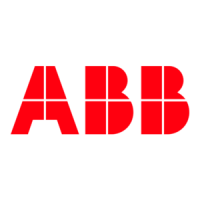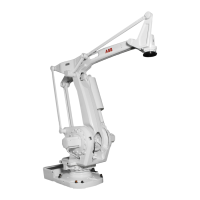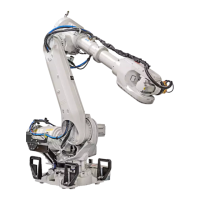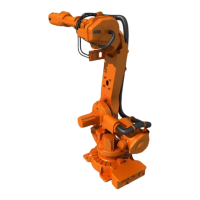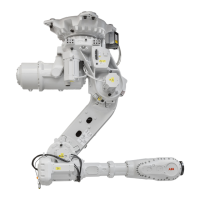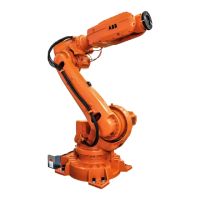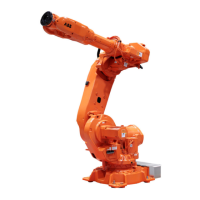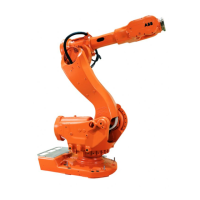Repairs General Description
Product Manual IRB 640 5
1.1 Document Guidance
The subsequent chapters describe the type of service work that can be carried out by
the Customer´s own service staff on site. Certain types of work, requiring special expe-
rience or special aids, are not dealt with in this manual. In such cases, the defective
module or component should be replaced on site. The faulty item should be sent to
ABB Flexible Automation for service.
Calibration. Recalibration of the robot may have to be carried out after replacing
mechanical unit parts or when the motor and feedback unit have been separated; or
when a resolver error has occurred or the power supply between a measurement board
and resolver has been interrupted. The procedure is described in detail in Chapter 9,
Calibration.
IMPORTANT! When work is done on the robot signal cabling, this may result in
the robot moving to incorrect positions.
After doing such work, it is important that the robot calibration position is
checked as described in Chapter 9.5, Checking the calibration position. If a cali-
bration fault is discovered, the robot must be recalibrated as described in Chapter
9, Calibration.
Tools. Two types of tools are required for various service jobs involving dismantling;
on the one hand, conventional tools like socket and ratchet spanners, etc.; on the other
hand, special tools may be necessary, depending on what type of service is being car-
ried out. The conventional tools are not dealt with in this manual, based on the assump-
tion that the service personnel have sufficient technical basic competence. However,
service work requiring the use of special tools is described in this manual.
Foldouts. In the Spare Parts chapter of this manual, there are a number of foldouts
illustrating the robot parts, intended to facilitate quick identification of both the type of
service required and the composition of the various components. The parts are item
numbered on the foldouts. The foldouts are referred to in the Manual text within
“arrow heads” (< >) as exploded view numbers. Where reference is made to foldouts,
other than those specified in the paragraph title, the foldout number is included in the
item number reference, for example <5/19> or <10:2/5>, the digit(s) before the stroke
referring to the foldout number.
Numbers in brackets ( ) refer to figures in the text.
The foldouts also include information such as article number, designation and relevant
data.
N.B. This manual is not to be considered as a substitute for a proper training
course. This document is intended for use after the course has been completed.
